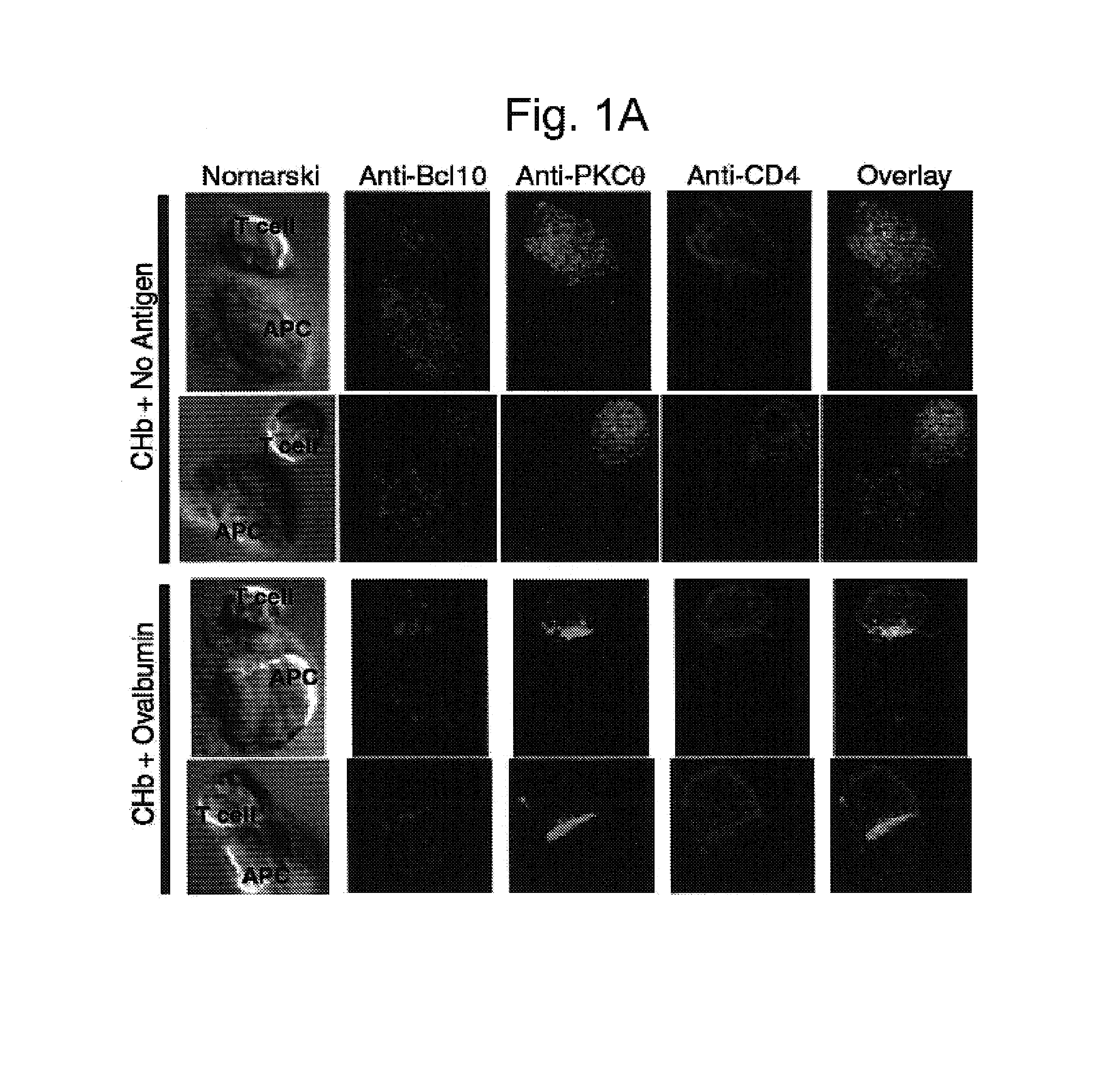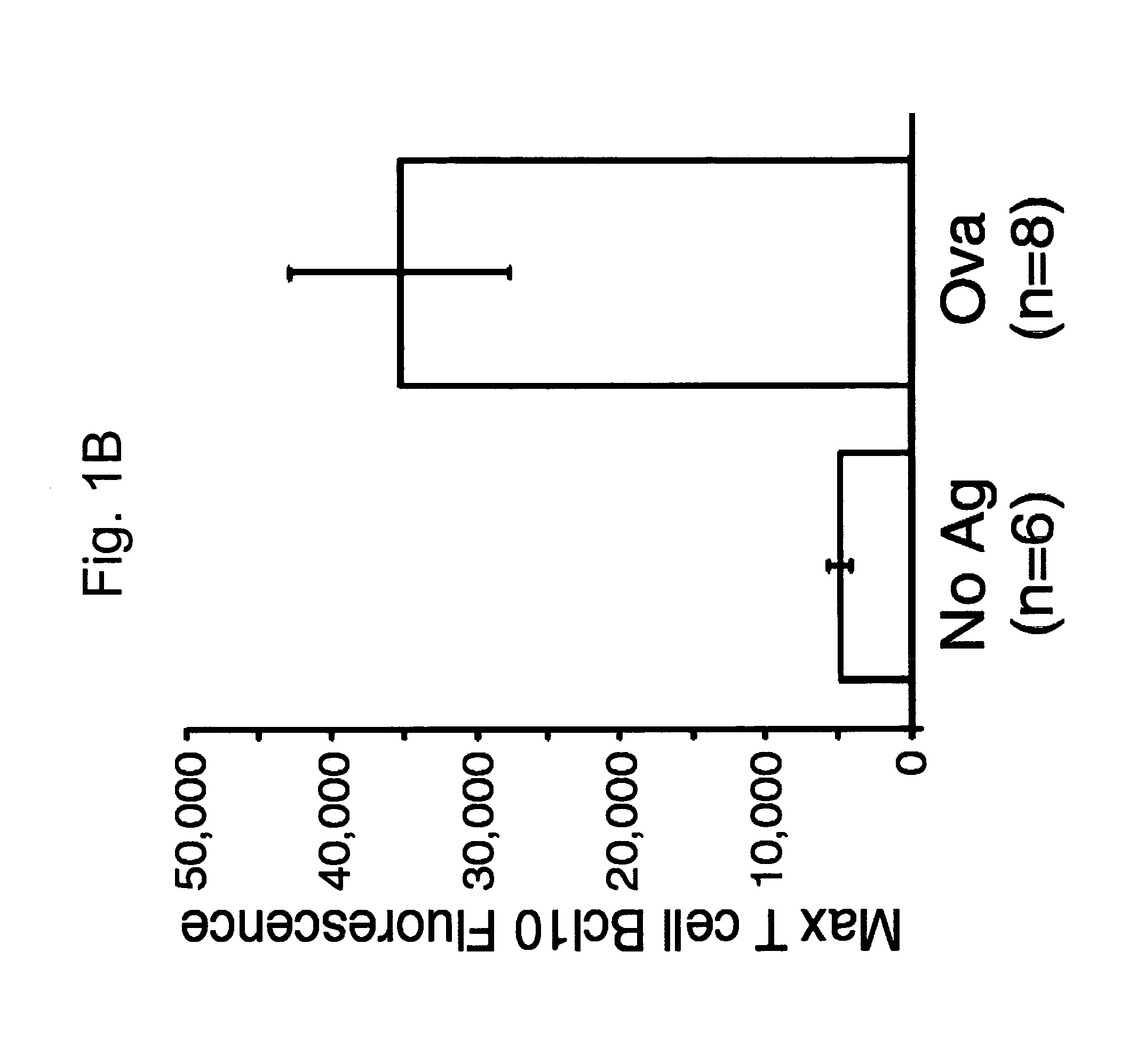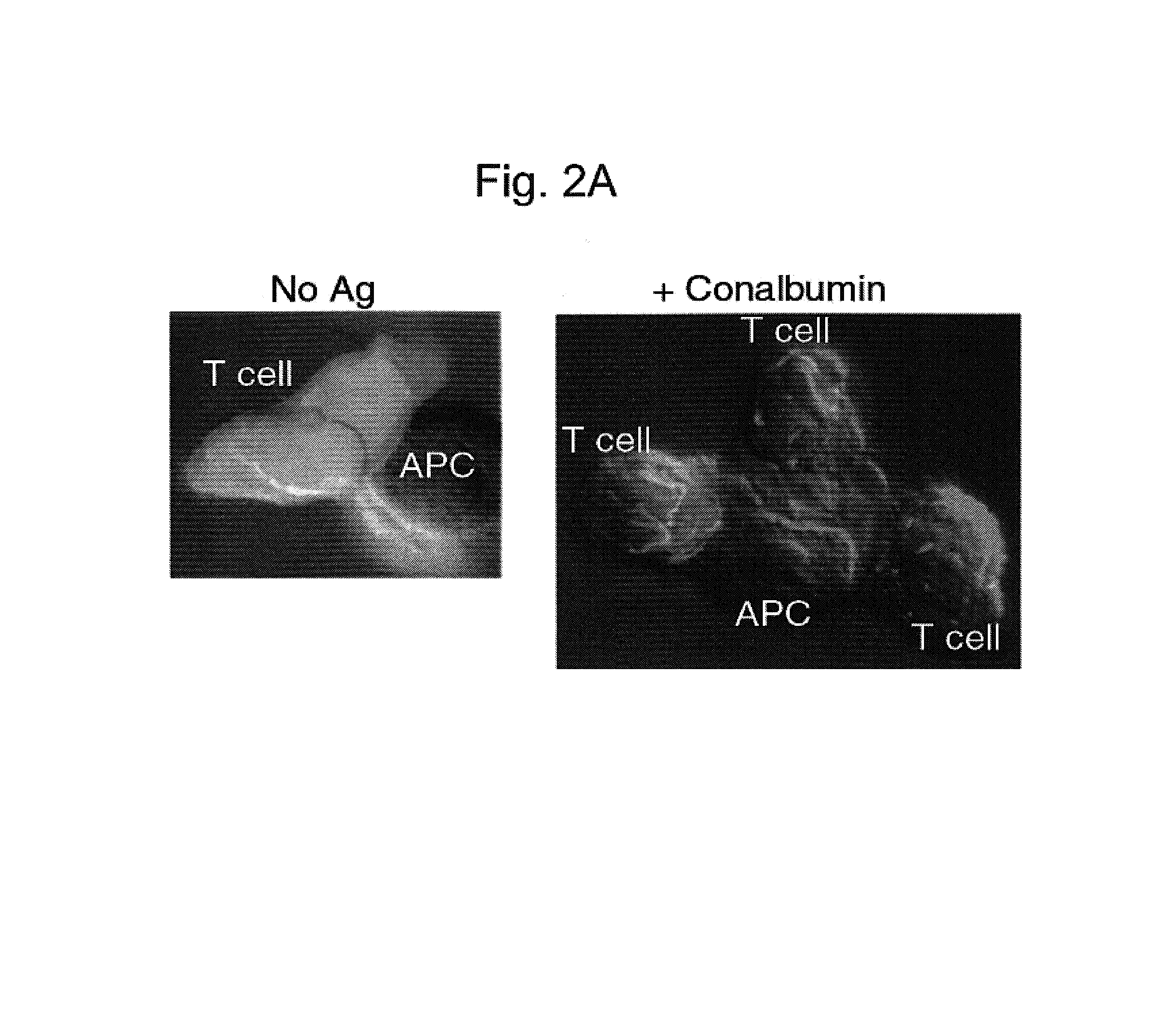Method to identify regulators of cellular activation using Bcl10
a technology of cellular activation and bcl10, which is applied in the field of cell activation assessment methods, can solve the problems of high-throughput screening assays, poor quality, and inability to identify novel drugs that target specific signaling pathways, and achieves the effects of reducing bcl10 signal transduction, increasing bcl10 signal transduction, and increasing translocation
- Summary
- Abstract
- Description
- Claims
- Application Information
AI Technical Summary
Benefits of technology
Problems solved by technology
Method used
Image
Examples
example 1
[0112]The following example demonstrates the redistribution of endogenous Bcl10 in response to specific antigen stimulation.
[0113]The inventors sought to establish whether Bcl10, like PKCθ, might be recruited to the c-SMAC in response to specific antigen-loaded APC. Recent work using antibody capping (22) or antibody-coated beads (4) has shown that Bcl10 can be recruited to the cytoplasmic face of the engaged TCR, but no analysis of Bcl10 localization to SMACs in a T cell / APC interaction model has been reported. The inventors produced T cell blasts from mice transgenic for a TCR specific for an ovalbumin peptide (Ova 323–339) bound to IAb (OTII mice (23)). OTII T cell blasts were incubated for 45 minutes with CHb APC that had been loaded with either no antigen (FIG. 1A; CHb+No Antigen), or with 10 μg / ml of the ovalbumin peptide, OVA 323–339 (FIG. 1A; CHb+Ovalbumin). T cell / APC conjugates were detected by immunofluorescence microscopy, using monoclonal antibodies directed against Bcl...
example 2
[0116]The following example demonstrates that fluorescent protein fusions of Bcl10 recapitulate the behavior of endogenous Bcl10.
[0117]In order to study antigen-mediated relocalization of Bcl10 in more detail, the inventors constructed a fluorescent protein fusion between Bcl10 and yellow fluorescent protein (YFP). For these experiments, the CD4+ T cell clone D10 was used, which is specific for a conalbumin peptide bound to IAk, and D10 cells were infected with a Bcl10-YFP retrovirus. In these cells, Bcl10-YFP was diffusely localized throughout the cell, and this distribution was unchanged when the cells were conjugated with CH12 APC in the absence of antigen (FIG. 2A, left panel, “No Ag”). However, a dramatic redistribution of Bcl10-YFP into punctate and filamentous structures was observed when these T cells were conjugated with conalbumin-loaded CH12 APC (FIG. 2A, right panel, “+Conalbumin”, 500 μg / ml Conalbumin). Referring to FIG. 2A, the fluorescent image is overlayed on the Nom...
example 3
[0122]The following example demonstrates that redistribution of Bcl10 is not dependent upon cytoskeletal filaments.
[0123]Because TCR stimulation causes formation of Bcl10 POLKADOTS, which sometimes adopt a filamentous appearance, the inventors decided to examine the possibility that Bcl10 clustering might involve cytoskeletal filaments. To circumvent the problem that many cytoskeletal inhibitors also impair T cell / APC conjugate formation, D10 T cells were activated with phorbol ester (PMA), a stimulator of PKC. Specifically, in these experiments, D10 T cells infected with retroviruses encoding PKCθ-CFP and Bcl10-YFP received no pre-treatment, 2 hr pretreatment with 10 μg / ml nocodazole, or 1 hr pretreatment with 2 μg / ml latrunculin A. Cells then received either no treatment or were incubated for 20 min with 10 ng / ml PMA.
[0124]Indeed, PMA stimulation of D10 T cells expressing PKCθ-CFP and Bcl10-YFP led to the translocation of PKCθ-CFP to the cell membrane (data not shown) and the form...
PUM
| Property | Measurement | Unit |
|---|---|---|
| incubation time | aaaaa | aaaaa |
| fluorescent wavelength | aaaaa | aaaaa |
| time | aaaaa | aaaaa |
Abstract
Description
Claims
Application Information
 Login to View More
Login to View More - R&D
- Intellectual Property
- Life Sciences
- Materials
- Tech Scout
- Unparalleled Data Quality
- Higher Quality Content
- 60% Fewer Hallucinations
Browse by: Latest US Patents, China's latest patents, Technical Efficacy Thesaurus, Application Domain, Technology Topic, Popular Technical Reports.
© 2025 PatSnap. All rights reserved.Legal|Privacy policy|Modern Slavery Act Transparency Statement|Sitemap|About US| Contact US: help@patsnap.com



